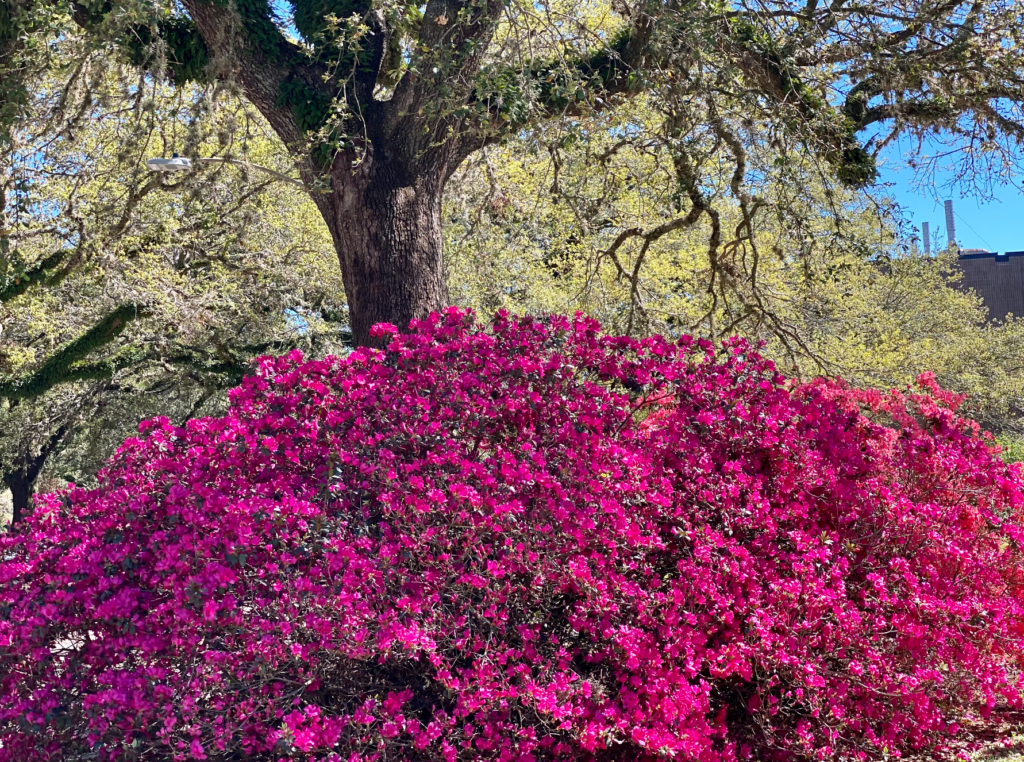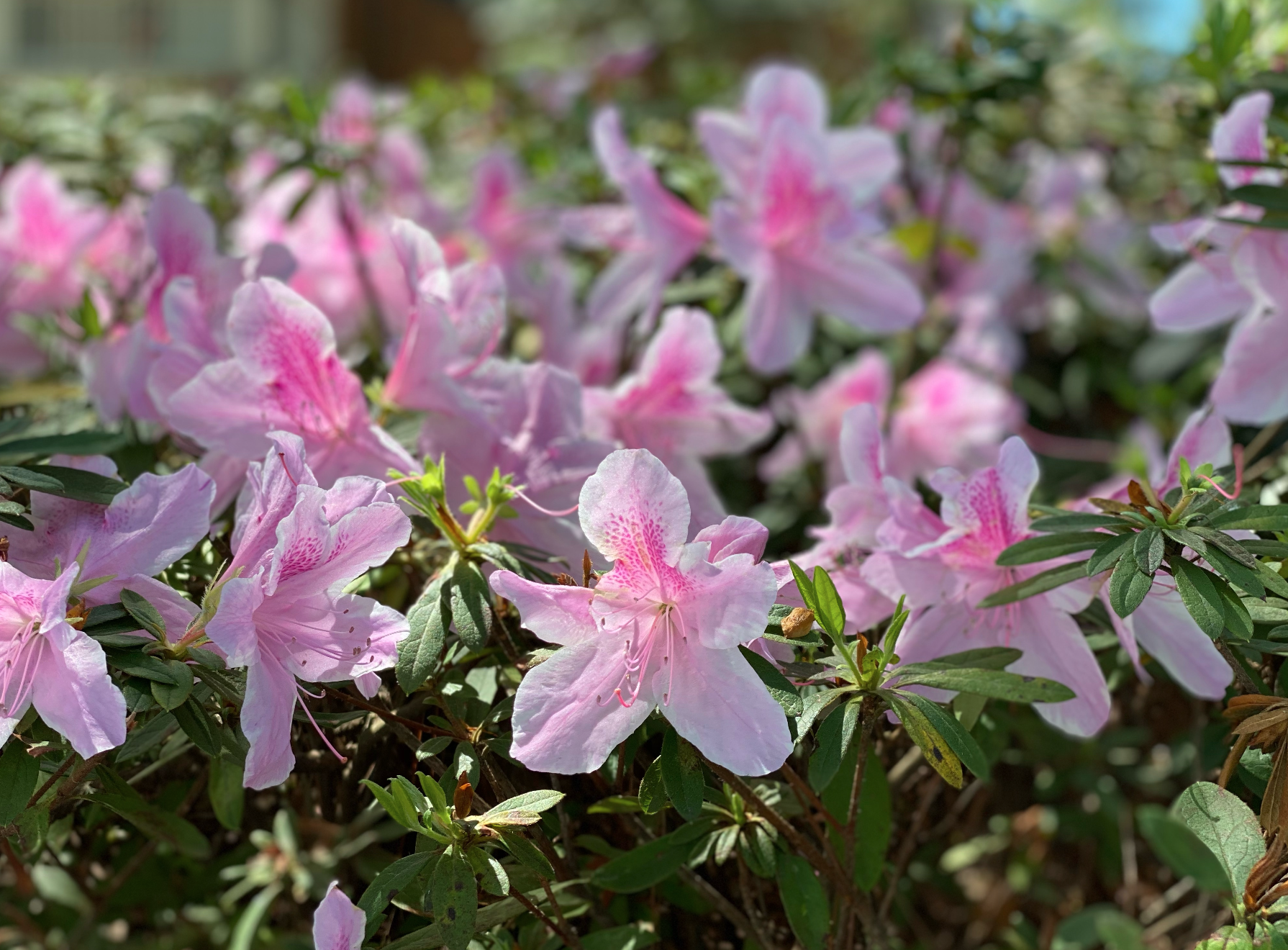We’re tickled pink by the blushing blooms of azaleas this spring—here’s how to care for them
One step outside this week and you’ll be struck by a sea of color, blooming from what seems to be every showy shrub in the city. Azaleas really know how to put on a performance—we can’t deny the beauty of a pop of pink or a splash of fuchsia. And is it just us, or are these pretty blooms looking better than ever this year?!
As azaleas line nearly every driveway throughout the South, there’s no secret as to why these popular plants have continued to be bred over hundreds of years. Once planted, azaleas require little upkeep, making them alluring to those with little energy to spare. To learn all there is to know about this Southern staple, we spoke to Heather Kirk-Ballard, assistant professor and extension specialist of consumer horticulture at the LSU AgCenter, to give us her advice on keeping and caring for azaleas.
“It depends on what you’re looking for,” says Kirk-Ballard. “The really large ones are called Indica azaleas—those are the ones that are huge and can get up to 10 feet. They bloom just once a year in the spring, and they’ve been bred for all sorts of different shades, different colors and different sizes. When choosing azaleas, you want to think about how big they can get. If you’re looking to put something in front of your house that’s a little smaller, you can use the dwarf azaleas like the Kurume. They only get about 4 to 6 feet in height. So just know the size of the area that you’re trying to fill. A lot of people use the larger azaleas to line their driveways, and those are usually the Indica azaleas.”
Knowing the best spot to plant an azalea shrub makes all the difference, Kirk-Ballard advises. “Most azaleas prefer partial sun, partial shade; they’re kind of an understory tree,” she says. “They do really well under oak trees and pine trees, so you want to make sure that they’re not in an area that gets too much sun.”

Keeping your chosen planting area well drained is also vital if you hope to grow healthy and handsome azaleas. “Azaleas like a soil that’s acidic, so in the range of 5 to 6 in terms of pH,” says Kirk-Ballard. “So you want to test the soil, and if you need to make adjustments you can you can buy elemental sulfur or aluminum sulfate or ammonium sulfate. You can find those at garden centers or local nurseries to help adjust the pH down. Azaleas like well-drained soils that have a lot of organic matter. If you get in an area that’s not well drained, they can be susceptible to different fungal diseases, so we recommend that you make sure they’re in a raised bed that gets good drainage.”
While we’re all happy to marvel in the blooming of azaleas once a year, you might be surprised to know that there is another breed of azaleas that can give a little more. “The traditional azaleas bloom once a year and they have this spectacular show this time of year, but the Encore azaleas were bred locally by a local breeder, and they bloom three times a year,” says Kirk-Ballard. “That’s why they’re called Encores, because they bloom in the spring, they bloom again in the summer, and then they bloom again in the fall.”
Once azaleas have concluded their performance, the next step is pruning—but knowing the best time is critical to beautiful azaleas the following year. “People sometimes trim azaleas at the wrong time,” says Kirk-Ballard. “The best time to prune your azaleas is right after they bloom. The blooms are set on the old wood, so azaleas will bloom, and a couple of weeks later they are already creating the new buds that won’t open till the next year. You can’t see them yet, but they are created on that old wood, so you don’t want to make the mistake of trimming back your azaleas in summertime or in the fall; you wan’t to do it right after they bloom.”
Find more home gardening advice on the LSU AgCenter’s website. And check out a neighborhood full of gorgeous gardens in this story from the inRegister archives.












